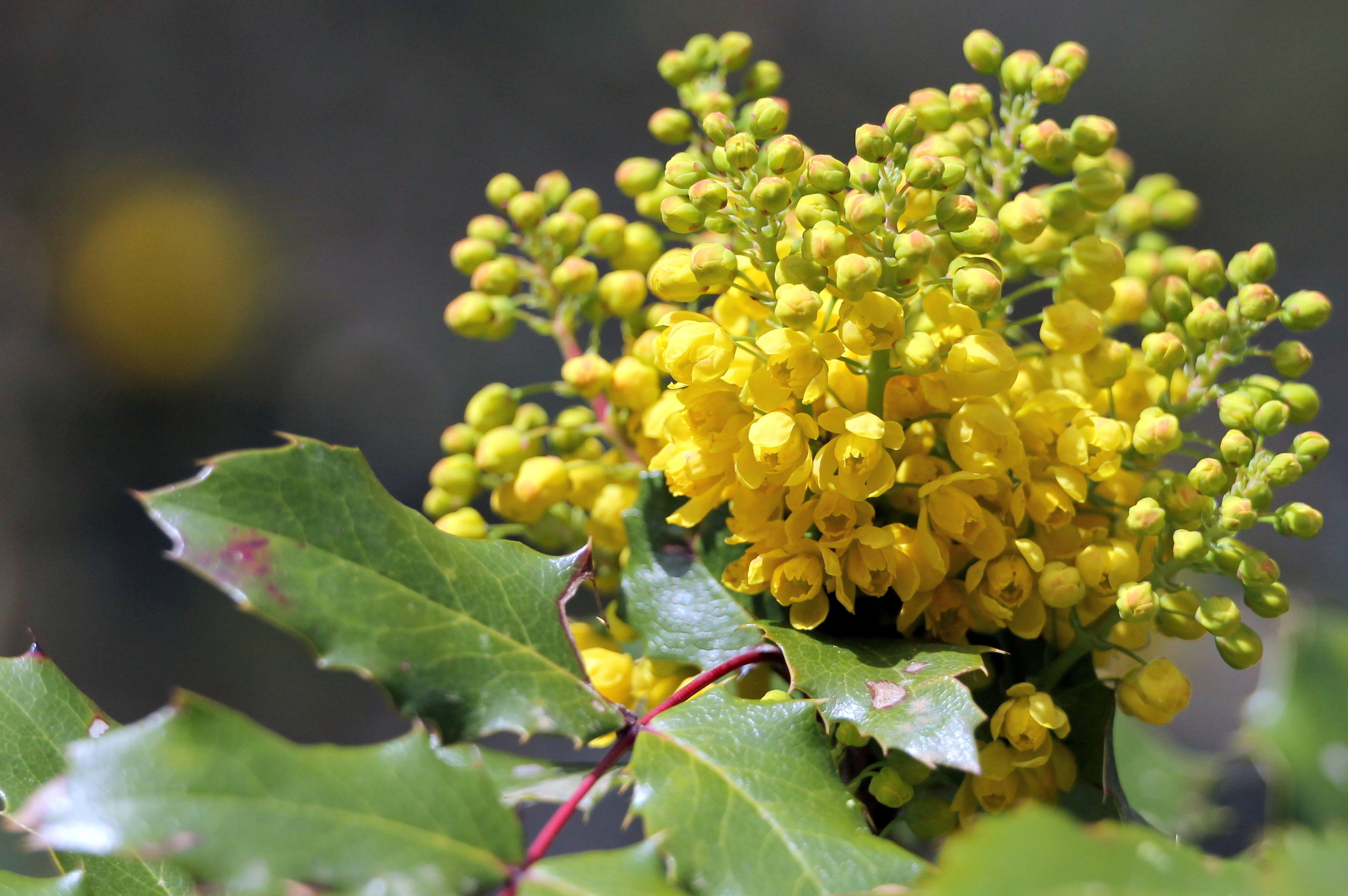Mahonia repens (Creeping Oregon grape)
Formerly Berberis repens. Creeping evergreen subshrub up to 12 in. tall with deep blue berries from bright yellow flower clusters, blooming April to September. Occurs on well-drained, dry to moist soils in coniferous forests, woodlands, shrublands, plains, riparian and occasionally wetland habitats; up to 11,000 ft. elevation. Intolerant of poor drainage and high water tables; tolerant of strongly acid to mildly alkaline soils. Rhizomatous, sprouting with or without wildfire. Heat, sun and shade tolerant and makes excellent landscaping groundcover. Poor palatability to livestock but important food to some wildlife, especially as elk winter forage and summer berries for bears. Pollinated by bees and butterflies. Nectar source for Johnson’s hairstreak butterfly.
DISTRIBUTION / ADAPTATION
INFORMATION & ATTRIBUTES
Family: Berberidaceae
Duration: Perennial
Growth Habit: Shrub/subshrub
Native Status: Native
Growth Form: Rhizomatous
Mature Height: 4-18 in.
Bloom Color: Yellow
Fruit/Seed Color:
Bloom Period:
Annual Precipitation: 12-140 in.
Drought Tolerance:
Shade Tolerance:
Elevation: up to 10,000 ft.
Fire Resistance:
Fire Tolerance:
Nitrogen fixation:
SOIL ADAPTATION
Coarse Texture: Yes
Medium Texture: Yes
Fine Texture: No
Salinity Tolerance:
CaCO3 Tolerance:
pH Range: 4.6-7.6
SEEDING NOTES
Seeds per Pound:
Seeding Rate: PLS lbs/acre
Season: Fall
Days to Germination:
VARIETIES & LOCAL ACCESSIONS
None



